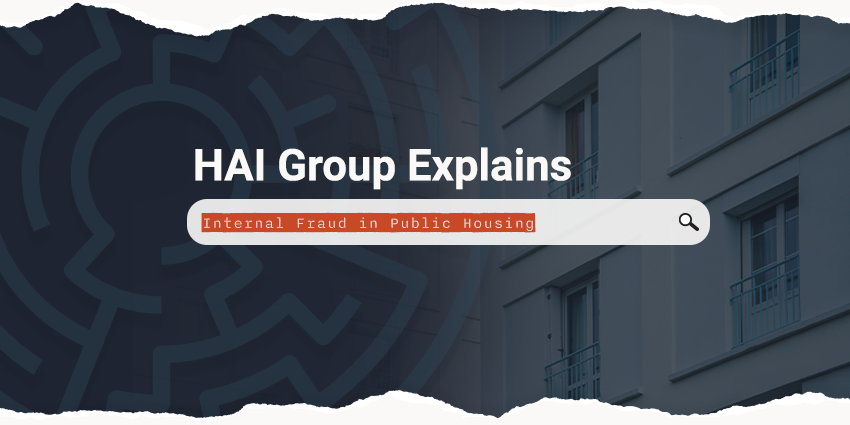Active shooter and workplace violence incidents are a growing threat to businesses of all types, including public and affordable housing organizations.
In-depth employee training, incident response planning, and comprehensive insurance coverage are essential to prepare your organization for the unthinkable.
While standard general liability and property insurance policies can provide limited protection to organizations targeted in such attacks, coverage gaps are common due to the many ways losses can be incurred. Organizations can address these gaps by purchasing a deadly weapons insurance policy—also known as active shooter coverage or malicious assailant coverage—developed by commercial insurance carriers in response to the growing number of incidents involving an armed individual or group.
Check out HAI Group Online Training's subscriber-only course that covers the best actions to take during an active shooter situation and the correct ways to interact with law enforcement officers.
Active shooter incidents on the rise
The FBI defines an active shooter as "one or more individuals actively engaged in killing or attempting to kill people in a populated area."
From 2019 to 2023, the frequency of active shooter incidents has shown an upward trend, averaging 45.8 incidents per year, compared to 24.2 per year from 2014 to 2018. It's important to note that FBI statistics on active shooter incidents exclude incidents related to self-defense, gang violence, drug violence, domestic disputes, and hostage situations, despite hundreds occurring nationwide annually.
Key findings from the 48 active shooter incidents in 2023 include:
- Casualties: There were 105 fatalities and 139 injuries.
- State Distribution: California reported the highest number of incidents (8), followed by Texas and Washington (4 each).
- Incident Locations: 20% of incidents occurred in places of business, while the majority (58%) occurred in open spaces (29 incidents).
- Insider Threats: Four incidents (8%) involved an insider threat.
- Connection to Location/Victims: In 42% of incidents (20), a connection between the shooter and the location or at least one victim was identified; in the remaining 58% (28 incidents), no connection was found.
Why should housing organizations consider deadly weapons coverage?
Public and affordable housing organizations are tasked with ensuring safe and secure living environments for their residents. According to Angel Fear, assistant director of account services at HAI Group, the rising risk of deadly attacks in these settings is a growing concern with potentially devastating consequences for residents and staff.
A deadly attack at a housing organization can result in significant financial losses, including costs for emergency response, medical care, property damage, business interruptions, legal fees, and counseling services. Authorities may also require temporary closure of buildings and relocation of residents under certain circumstances.
Insurance coverage for deadly weapons can help mitigate these financial impacts on housing organizations, covering necessary expenses promptly. It also demonstrates to residents, staff, and the community a commitment to safety and readiness in responding to crises.
"Having deadly weapons coverage in place can reassure residents, staff, and the community that the housing organization prioritizes safety and is prepared to manage emergencies," Fear said.
The basics of deadly weapons insurance
Deadly weapons coverage is typically purchased by businesses, schools, and other organizations vulnerable to violent attacks.
"In today's climate, it's a sad reality that this coverage is now necessary for public and affordable housing organizations," Fear said.
Coverage is typically activated by a deliberate attack from a malicious assailant seeking to induce fear and cause significant harm. Fear recommends policies offering broad-form coverage that can adapt to various scenarios and include a comprehensive definition of weapons.
"Most deadly weapons policies define a malicious assailant as someone possessing a handheld device, instrument, or substance used to cause bodily harm," Fear explained. "For instance, an individual using a vehicle in an intentional act of violence could be considered an armed assailant."
What can a deadly weapons policy cover?
|
Counseling services |
Emergency response costs |
|
Legal fees |
Medical expenses |
|
Site surveys/threat assessments |
Property damage |
|
Preventative training for employees |
Business interruption costs |
Aside from aiding a housing organization in responding to and recovering from a malicious attack, deadly weapons coverage typically includes services to help organizations prepare for and prevent such incidents.
"In some cases, deadly weapons policies cover the cost for policyholders to access services such as risk assessment for deadly incidents, site surveys, development of comprehensive security and incident response plans, and employee training," Fear said.
Deadly weapons insurance generally operates on a location-based policy, where the policyholder provides the insurer with a schedule of locations needing coverage. Fear noted that some housing organizations choose to cover only office spaces, while others extend coverage to their entire portfolio of properties.
Preparing for and preventing the unthinkable
Veivia, a former FBI agent, said deadly attacks on businesses closed to pedestrian traffic are usually by someone internal, such as a disgruntled employee.
Individuals who engage in workplace violence experience multiple stressors leading up to an attack. These stressors are physical, psychological, or social forces (e.g., relationship conflicts, mental health episodes, financial strain, drug abuse, injuries, death of a loved one, etc.) that place real or perceived demands on an individual, Veivia said.
"Maladapted coping behaviors lead to violence," he said. "It's a domino effect, and the last domino is violence. We want to intercept them before they get to that last domino."
Veivia said organizations should conduct regular security surveys and assessments to identify individuals who pose a risk of violence. He recommended that organizations create a multi-disciplinary threat assessment team representing various departments. Veivia suggested working with a certified threat manager to coach and guide the threat assessment team.
The team's goal isn't to predict violence, but to prevent it, Veivia said.
"A cardiologist can look at your risk factors, your lifestyle, and conclude that you're either at a low, medium, or high risk of a cardiac event," Veivia said. "They can't predict when you will experience such an event, just that it's a risk. It's the same as a threat assessment."
Veivia said the goal shouldn't be to punish low-risk individuals but to attempt to mitigate the stressors these individuals are experiencing. How can you predict if someone will become violent? Individuals often leak their intentions to someone in their inner circle before an attack. Employees should receive training on how to pick up on and report these cues, such as changes in social behavior, paranoia, repeated violations of company policies, and talk of severe financial problems. Imminent threats should always be reported immediately to 911, Veivia said.
"Even a small piece of info you provide could prevent a tragedy," he said. "We are hardwired to detect danger but socialized to ignore it. If your hair stands up on the back of your neck, that's a clue, and we need to trust that."
Do you need deadly weapons coverage for your public or affordable housing organization? Contact your HAI Group account executive to start the conversation.
This article is for general informational purposes only. HAI Group makes no representations or warranty, express or implied. Your use of the information is at your own discretion and risk. HAI Group nor any of the authors, contributors, administrators, or anyone else connected with HAI Group, in any way whatsoever, is responsible for your use of the information contained herein. Our purpose is to provide an overview of the specific subject matter, and our recommendation is to play it safe and consult with a professional specializing in the specific subject matter for guidance.







